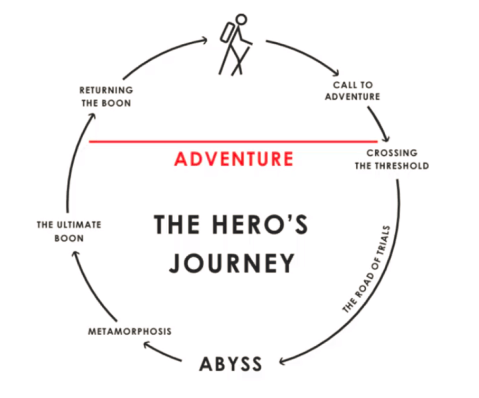
Screenwriter and short film director Michael Kinirons presented us with his masterclass into the world of screenwriting. We are familiar with the narrative structure of a film. There’s ‘Act 1’ (the set-up), ‘Act 2’ (the complication) and ‘Act 3’ (the resolution). These three acts are sectioned in the ‘A Plot’. However, there’s another section in a film’s narrative known as the ‘B Plot’, which centres around the examination of a character arc.
He described to us the quintessential element to making a memorable story, which is the character arcs. Character arc relates to the film’s theme. The concept is that everybody’s thriving to become a better person. Because film is about two worlds colliding; something relevant for the character and their arc is about want and need – which creates the protagonist.
The protagonist starts as the ‘living dead’. Luke Skywalker, for example, is naïve and has to learn the ways of the force to become a hero. There is a ‘want’ (a specific conscious objective) and ‘need’ (an unconscious element missing in their life) going on inside the character’s world. Then, the protagonist starts to collide with the antagonist, who is an alternative version of the protagonist. Darth Vader, for example, wants to disrupt Skywalker’s life. The protagonists’ problem is their flaw that they try to solve along the way as if it were a moment of awakening.
Mr Kinirons presented the class a YouTube video (Lessons From The Screenplay 2017) on screenwriting involving the character arcs of the protagonists in Logan (2017) and Children of Men (2006). In the first act of the two films, the two protagonists are living with a ‘lie’. “The lie your character believes is the foundation for his character arc. This is what’s wrong in his world” (Weiland 2016 29). There is a dichotomy between lies and truth that the protagonist faces, thus making them sympathetic to the audience. This ‘lie’ eventually ends up turning into ‘truth’, which will describe the overall theme. The theme is a question that you explore throughout the film’s narrative and ultimately connects to the audience.
Exploring these character arcs are best described with the use of plot points in its narrative. The first plot point (at the end of Act 1 and the beginning of Act 2) is the choice that a character makes, which is the beginning of change. The second plot point (after the midpoint of Act 2 and near the start of Act 3) is where the character’s journey usually ends and he/she tests that final change. This plot point can open a series of dramatic questions, such as ‘will the protagonist survive?’
In summary, Mr Kinirons gave us a helpful insight into the depths of the hero’s journey and how everything in the film needs to be balanced evenly with the character arc. As an aspiring screenwriter, this lecture helped relate the storytelling techniques for my personal development and helped me to re-evaluate and reconstruct my concepts of film narratives sooner than later.
Works Cited
Chegsupanimit, Che. “The Hero’s Journey,” Chayoot.Blog, 8 July 2018, i0.wp.com/chayoot.blog/wp-content/uploads/2018/07/Heroes-Journey-Principles-by-Ray-Dalio.png?resize=479%2C398. Accessed 29 Mar. 2020.
Kinirons, Michael. “Michael Kinirons Masterclass”. 04 Feb. 2020, Film & Screen Media Auditorium, University College Cork.
Lessons From The Screenplay. “Logan vs. Children of Men – The End is in The Beginning.” YouTube, commentary by Michael Tucker, 12 Oct. 2017, youtube.com/watch?v=HUgYoT_xEFY
Weiland, K. M. Creating Character Arcs: the Masterful Authors Guide to Uniting Story Structure, Plot, and Character Development. PenForASword Publishing, 2016.
